Sender is the messenger platform of the future
What should be the ideal messenger of the future?
The world is now in a transitional stage of text chat evolution. Due to the fact that users spend more and more time in messengers, developers have come to the conclusion that existing forms of chats should become something more. That future lies in a multi-functional platform for communication.
In this article I want to share our vision of the future of interfaces and tell you about the chat platform Sender.mobi.
At the moment, 126 applications are installed on my phone. I believe two thirds of these can be replaced with a single messenger platform. Additionally, I shouldn’t need to constantly familiarize myself with new interfaces and applications, but should be able to operate with apps in the framework of existing forms of chats.
For Example:
Once I decided to order a pizza on my smartphone. With EDGE-Internet, CARL. Sender has the contact details of the pizzeria, where I made the order and paid for it, and I was happy that I didn’t need to download another new application just for this pizza
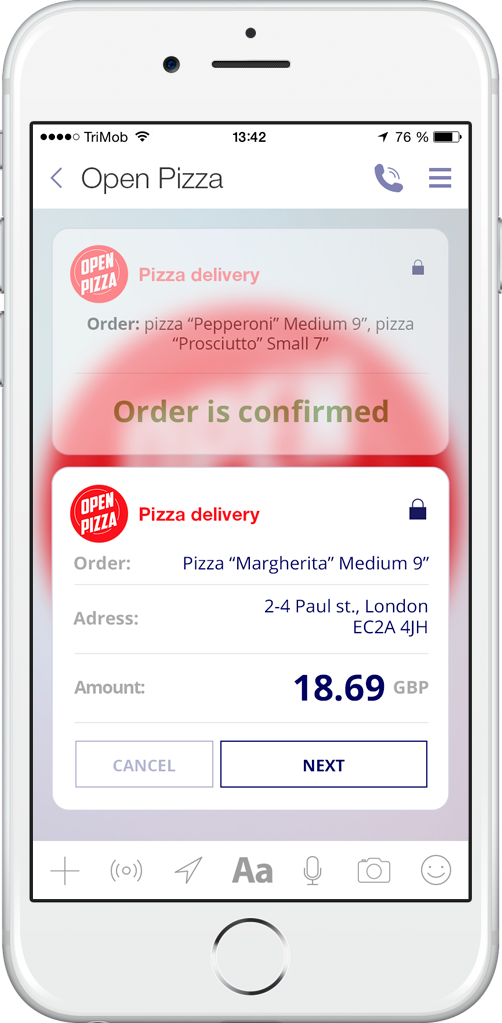 |
|---|
Another time I was at a concert of the "Brutto" group. I so disliked it that I wanted to quickly leave. Calling a taxi service was impossible, as it was noisy around and I had no special applications for a taxi. Sender had the taxi contact details I needed, in a way that was convenient to use.
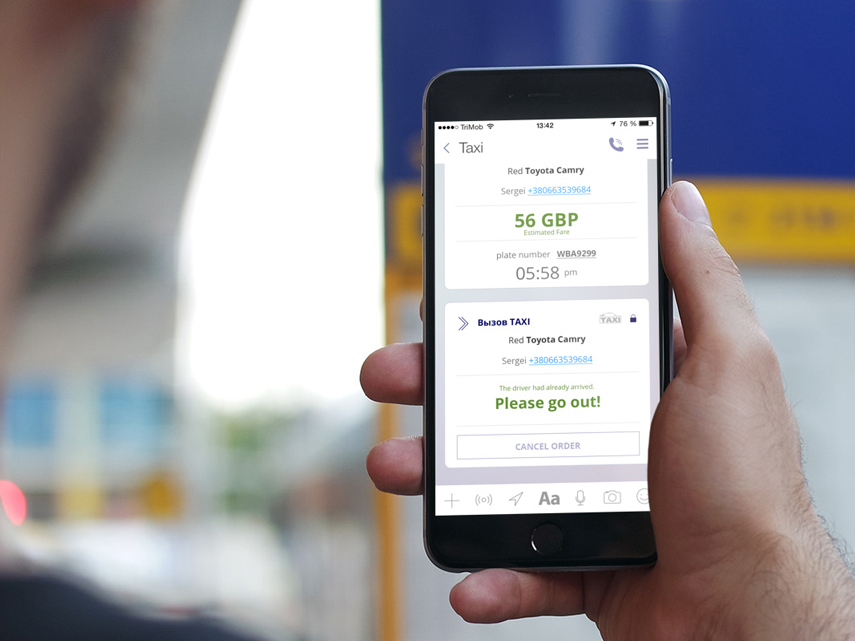 |
|---|
Businesses can also initiate contact with potential and existing clients. For example, take tracking parcels. As soon as the tracking status changes a customer will be informed about it in the chat. You may inquire about the parcel’s status by yourself as well, and put a question to the company’s operator.
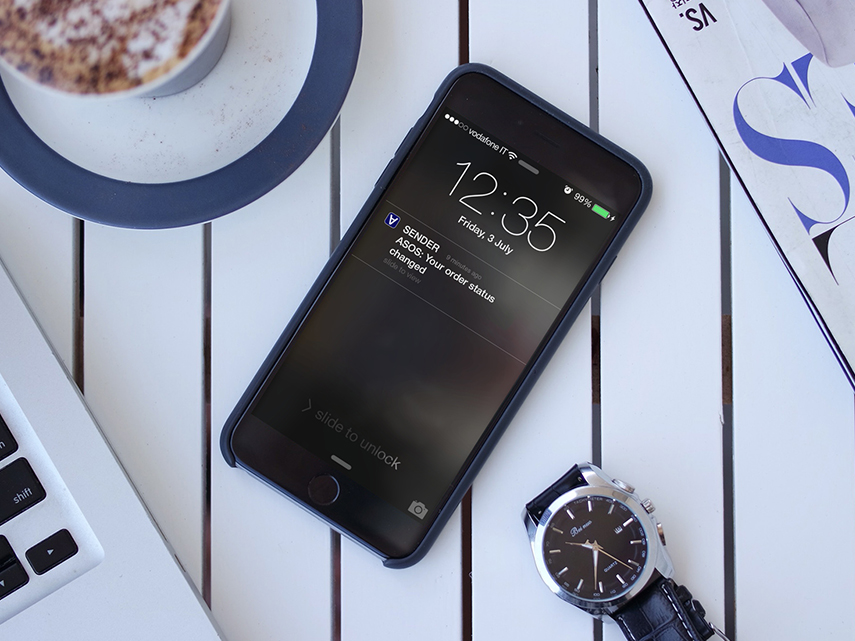 |
|---|
The most pleasant feature for me is p2p payments. Among my contacts there are a lot of people who prefer not to take cash, but to pay by their cards. So, when we ask for the bill in a cafe, all of us get out our cards. Usually, one of us pays the bill, then his card goes around the table, so that the rest write down the number and transfer money. In Sender money can be sent by a phone number right in a chat with your friend. And if one forgets what he owes, you may send him a request or issue an invoice.
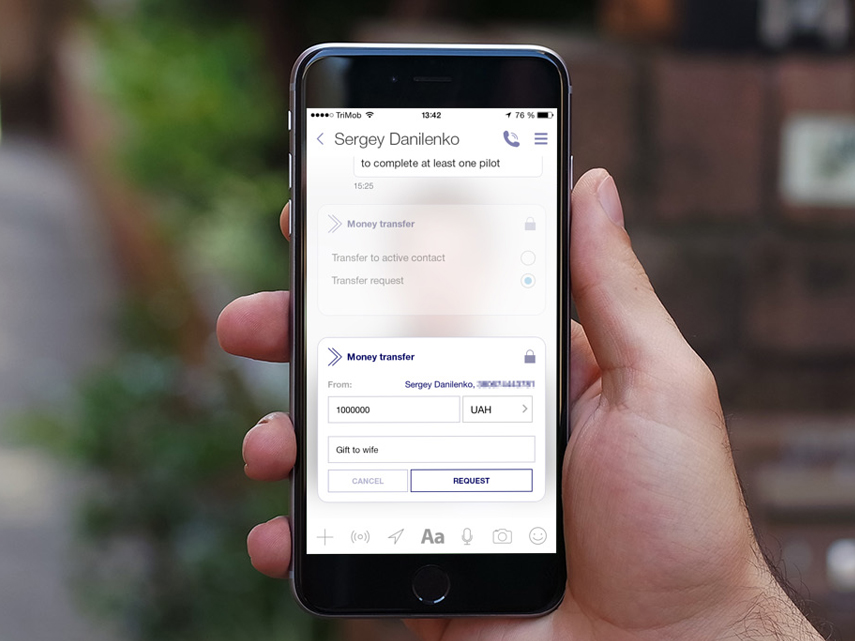 |
|---|
There is the concept of 100% text-based interfaces where information is entered by a user via typing on his smartphone’s screen. This approach has drawbacks: first, computers poorly process our natural language, and secondly, to press the button in a graphical interface is much easier than to type text on a smartphone’s keyboard.
Sender solves both problems using dynamic forms. Here is the procedure of mobile phone topping-up:
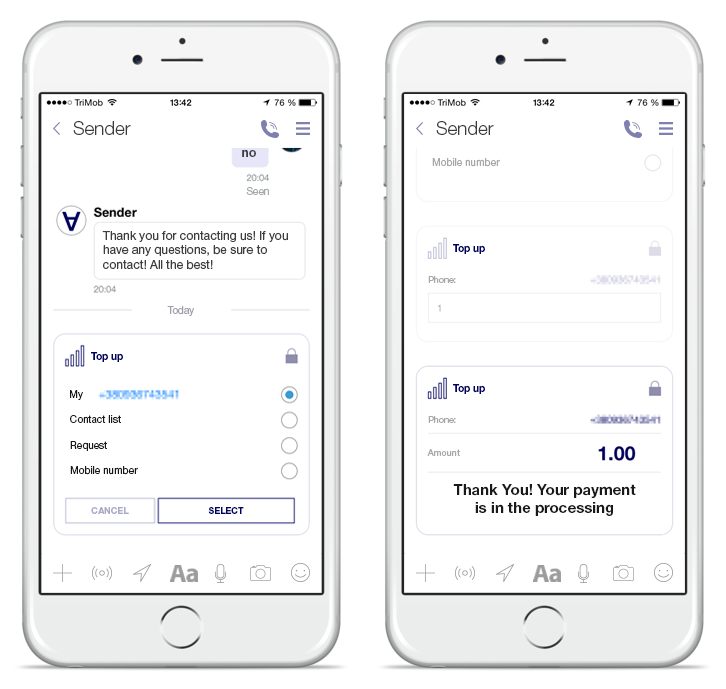 |
|---|
As you can see, to top up the phone I don’t need to write a single word. All dynamic forms were implemented using lightweight language FML (Form Markup Language), based on JSON. And all the problems of server-side flexibility were solved by Corezoid, the cloud operating system that became a tool for third-party developers on creation of their own business processes within their Sender contacts.
 |
|---|
Thanks to these developments, Sender developed a unique, strong and flexible business model.
Opposing concepts and the competitive environment
Last year, the difference in popular ideologies of interface creation became especially noticeable.
The first ideology, promoted by Apple, declares that we use every application for different purposes, so the experience of their use should be different. Plus, companies desire to stand out from their rivals by their unique applications.
The second ideology, promoted by Google, says that the user’s experience of each application on any platform should be unified, adjusted to certain standards, so that the user does not have to get used again to every application. This ideology presents a set of tools called Material Design to create such interfaces.
Text interfaces fit the description of the Google ideology, but instead of corresponding to Material Design, the messenger platforms propose a user to work with a well-known chat interface.
Each of these ideologies is correct. Now they exist in parallel, only time and users’ preferences will determine the future.
 |
|---|
Companies lack resources to implement their applications quickly. If it is not a super idea, then a market participant with more funding reinforces its positions while the rest are left developing their codes.
In messenger interfaces there are only three rules: my text is displayed on the right, the text of my interlocutor – on the left, and the messages you want to enter are in the box below.
Jonathan Libov
People have always enjoyed chats, starting with SMS and moving on to the current messengers. Users of Telegram send more than 2 billion messages per day, while the messengers cover only 2% of the market.
Once, one of LINE top managers suggested that if messenger users need only chat, then Whatsapp has already won. If not, then the world has new innovations to come.
One of the first movements beyond simple correspondence was made by Facebook Messenger. Some time ago they presented p2p payments in a chat. During their last conference Zuckerberg’s people presented Messenger Platform.
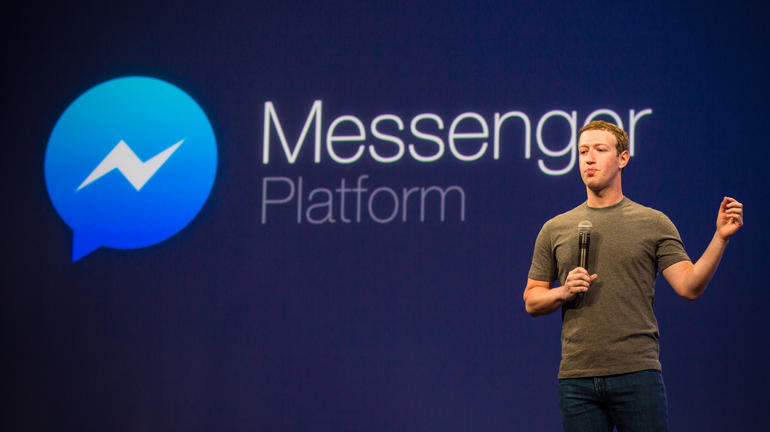 |
|---|
Here is what it is. Imagine that you are chatting with someone and want to send him a GIF file and you go to the section Applications for Messenger, find there an app that creates a GIF file, go to the application store, install it on your device, create a GIF file, and share it via the chat you prefer. Alas, this is a common data exchange between applications, but not complete services within the Messenger. It’s boring.
 |
|---|
Nevertheless, services are still inconsistent. At the conference F8, Facebook presented Messenger for Business showing the example of integration with an online store where you can track your parcel via chat, and even order and pay for goods. This is an interesting feature, but it is still in its infancy.
Recently, Telegram has updated as well, adding chat bots to its functional set. To understand its essence let’s analyze @imagebot as an example.
A user can add to himself the @imagebot contact. Then, in a dialogue with it, he can ask for a picture or a GIF-file upon a certain request. If this bot will be added as a user to another dialogue, the requests to it can be sent without leaving the dialog.
Imagine that you have a mutual chat with your friends, you have once added to there @imagebot and henceforth, instead of Google searching for a picture or installing additional applications, you can simply request it from the bot. For example, you want to report that you’re running late in a funny format. You should just type "/ get late" for the bot to provide you with the thematic picture.
 |
|---|
By means of other bots one is able to arrange voting, to play "Who wants to be a millionaire?", you can even get acquainted with someone via HotOrBot (analogue of dating service Tinder), and more. All of these chat-bots were created by Telegram, but the most interesting will start when third-party developers will start to create their own chats. Imagine, for example, a chat with your favorite restaurant, where you can book a table. But here the real problem of Telegram arises: the absence of supporting payments within the application.
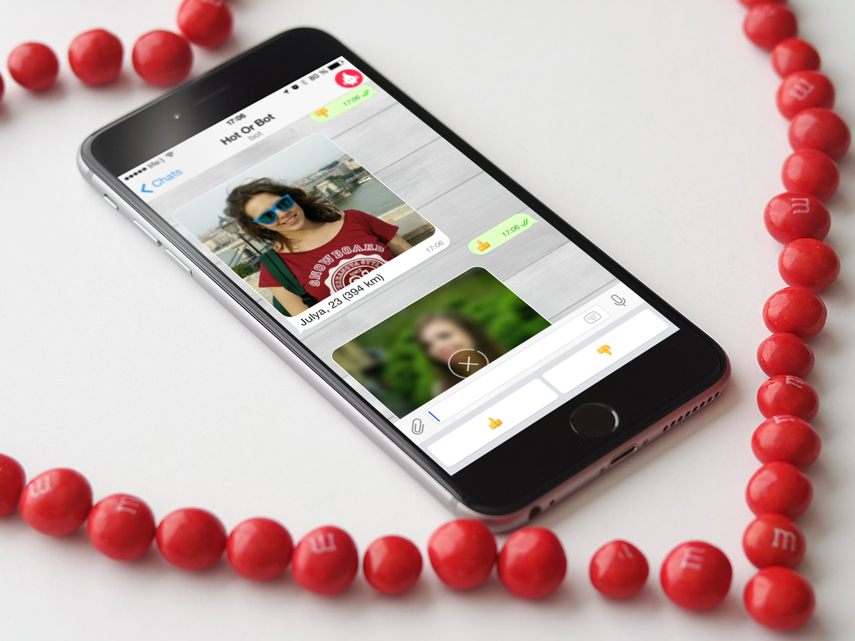 |
|---|
Messenger LINE is one of the most popular in Asia and No 1 in Japan. Last year they presented LINE Pay. This service allows you to add your card into a virtual wallet of the application and to buy app themes, partners’ games and applications. Eight months after the release of LINE Pay these are still all the functions available to users. Separately, there is LINE Mall and the LINE Store, but they are not a part of the messenger, but rather standalone applications.
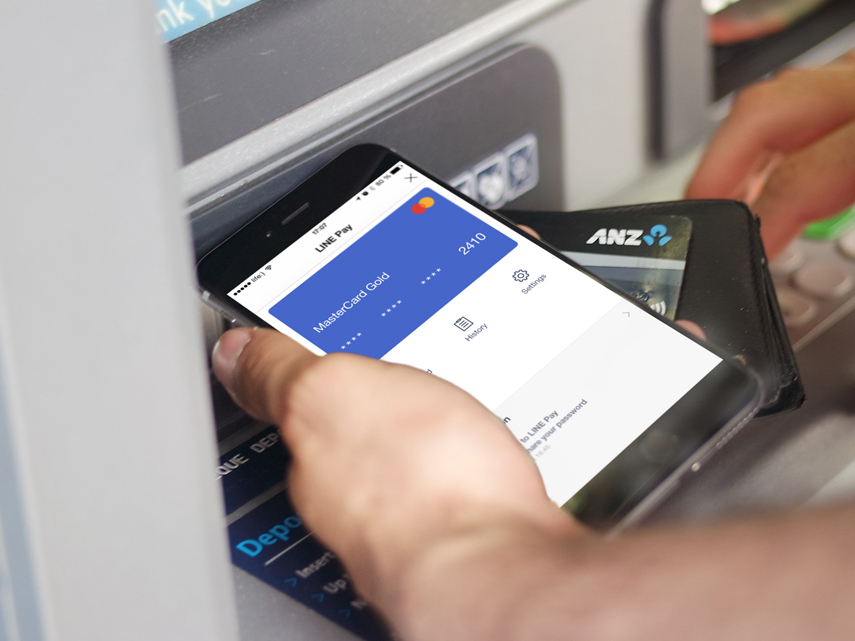 |
|---|
The new global trend is a single application for everything. This single application will be the messenger that will release us from dozens of separate applications and facilitate our communications with sellers of goods and services. As well as their communications with us. To correspond with vendors in a chat is much more natural than via any other communication channel. Plus, such chats can always be postponed for a later time. Sender has every chance to become the world's first full service messenger platform.
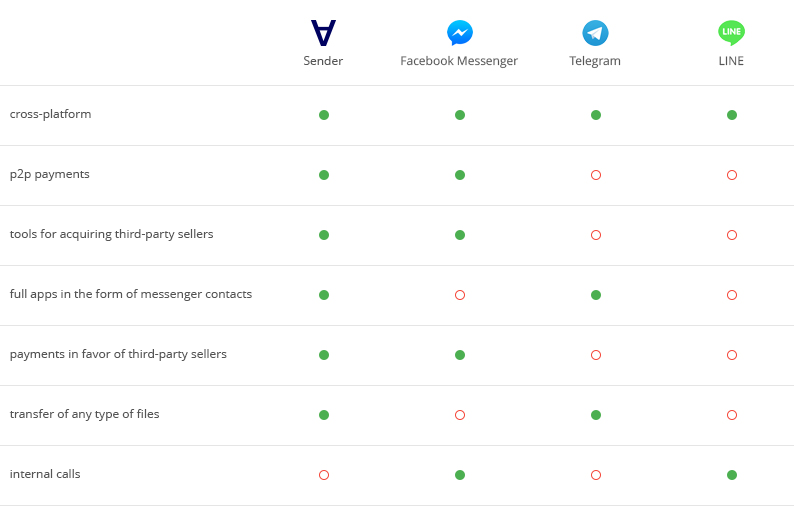 |
|---|
We consider Sender to be the perfect messenger platform. Text interface, payment tools, p2p and b2c chats, three-party access to application development, flexible cloud back-end - all this creates an elegant ecosystem combined with an effective business model.
The Sender application can be installed from the AppStore, Google Play
